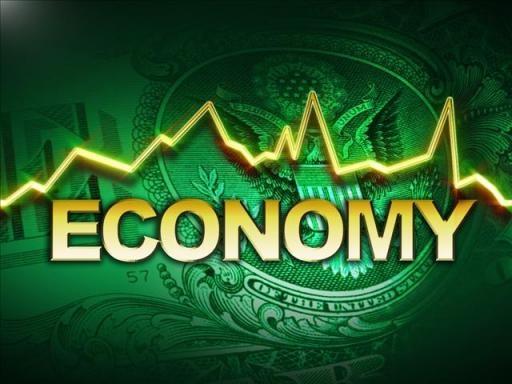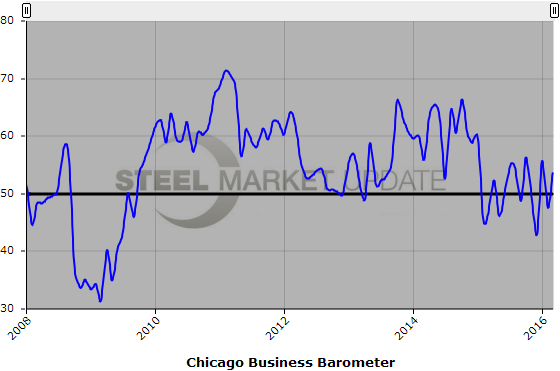Economy

Chicago PMI Surges 6 Points in March
Written by Sandy Williams
March 31, 2016
The Chicago Business Barometer, or Chicago PMI as it is commonly called, surged six points in March to 53.6.
The bounce back from February’s 8 point contraction was due to strong gains in production, new orders and order backlogs. The employment index rose above 50 in March to its highest level since April 2015. Inventories were flat for the month and remained in contraction.
Input prices rose slightly, attributed to an increase in oil prices, but remained in contraction for the eighth consecutive month.
Barometer panelists were optimistic that future orders will increase over the next three months.
The Chicago PMI has been volatile in recent months and the growth trend has been weak. During fourth quarter 2015 and into 2016, an increase in the PMI has generally been followed by a decline in the index the next month.
Chief Economist of MNI Indicators Philip Uglow said, “The most significant result from the March survey is the pick-up in the Employment component which has remained weak for much of the past year. Looking through some of the recent volatility, the data are consistent with steady, not spectacular, economic growth in the US.”
Below is a graph showing the history of the Chicago Business Barometer. You will need to view the graph on our website to use it’s interactive features, you can do so by clicking here. If you need assistance with either logging in or navigating the website, please contact our office at 800-432-3475 or info@SteelMarketUpdate.com.

Sandy Williams
Read more from Sandy WilliamsLatest in Economy

ISM: Manufacturing expansion loses steam after two months of growth
US manufacturing activity slowed in March after two straight months of expansion, according to supply executives contributing to the Institute for Supply Management (ISM)’s latest report.

Chicago Business Barometer rose to 16-month high in March
The Chicago Business Barometer increased for the third-consecutive month in March. Despite this, it still reflects contracting business conditions, as it has since December 2023.

Durable goods orders rise again in February
Transportation equipment led the increase, rising 1.5% to $98.3 billion.

Consumer confidence falls for fourth consecutive month
People remain concerned about inflation, trade policies, and tariffs.

Housing starts ticked up in February
Single-family starts last month hit a rate of 1.10 million, a month-over-month increase of 11.4%, census data shows.

